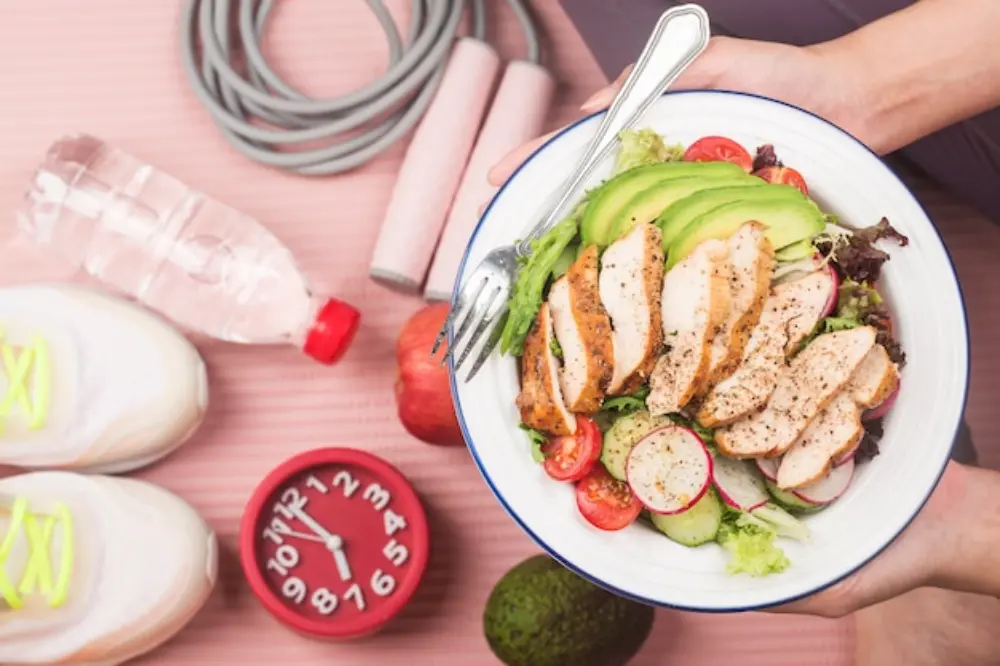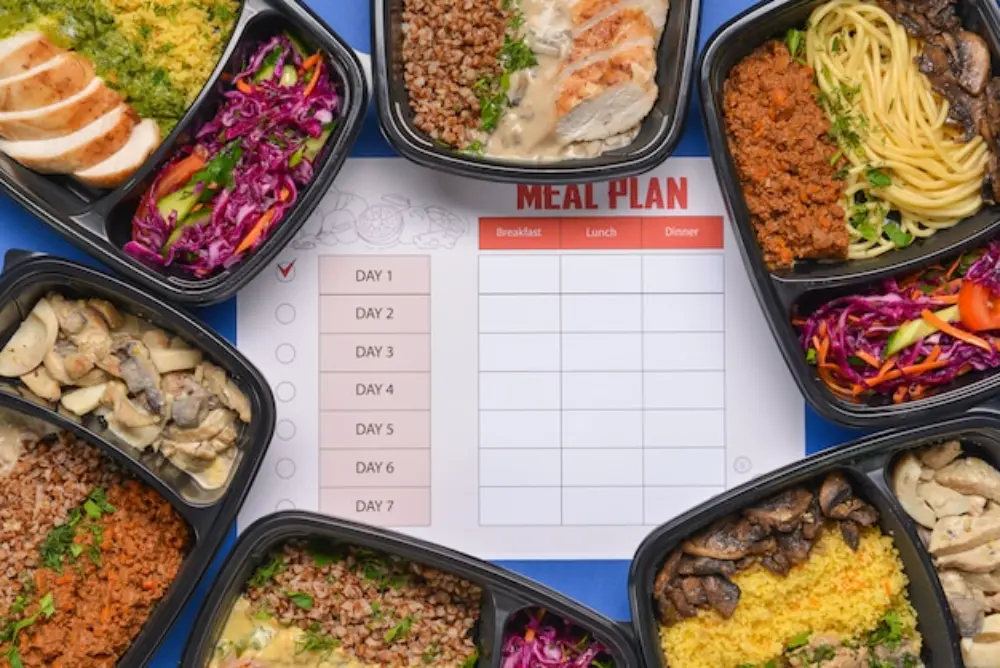Hey, I’m Sophie, and if you’re like me, you’ve probably thought about cutting back on carbs at some point. Whether for weight loss, better energy, or a healthier lifestyle, the idea of low-carb meal plans can sound a bit overwhelming. After all, carbs are in so many of the foods we love. But trust me, when I started following a low-carb meal plan, it completely changed how I felt—more energy, less bloating, and much more focus throughout the day.
You’re in the right place if you’re curious about low-carb meal plans and how they can benefit you. In this guide, I’ll walk you through a low-carb meal plan, why it works, and how you can create one that fits your lifestyle. I’ll also share my personal experience, tips, and a sample meal plan to make it easier for you to start.
What Are Low-Carb Meal Plans?
Low-carb meal plans focus on reducing the carbohydrates you consume daily. This means you’ll eat fewer foods like bread, pasta, rice, and sugary snacks. Instead, you’ll replace them with healthier options like lean proteins, vegetables, nuts, and healthy fats.
The idea behind a low-carb approach is that when your body has fewer carbs to burn for energy, it starts using fat as its primary fuel source. This can help with weight loss, stabilise blood sugar, and even improve heart health.

When I started my low-carb journey, it wasn’t just about cutting out carbs but replacing them with more wholesome, nutrient-dense foods that kept me fuller for longer.
Why Choose Low-Carb Meal Plans?
Many people wonder if a low-carb meal plan is right for them, especially with so many diet trends out there. From my experience, I can tell you that low-carb eating has several benefits that can make a real difference.
1. Weight Loss and Maintenance
One of the most popular reasons people try low-carb meal plans is to lose weight. Reducing carb intake lowers insulin levels, which in turn helps your body burn fat. I’ve personally seen a significant drop in body fat since starting low-carb, and it has made a massive difference in how I feel about my body.
2. Better Blood Sugar Control
A low-carb meal plan can be a game-changer for those with insulin resistance or diabetes. Lowering carb intake helps stabilise blood sugar levels, crucial for maintaining energy throughout the day. I’ve noticed my energy levels are much steadier when I follow a low-carb diet than when I eat more carbs.
3. Increased Mental Clarity
When I first switched to a low-carb lifestyle, one of the unexpected benefits was how sharper I felt mentally. I no longer had that midday crash where I would feel exhausted or foggy. My energy from a low-carb meal plan is more sustained, and I feel more focused.
4. Reduced Hunger and Cravings
Many people struggle with hunger when dieting, but low-carb meal plans can help keep cravings at bay. Foods rich in protein and healthy fats keep you fuller for longer, making it easier to stick to your plan. I was amazed at how little I craved sugary snacks once I cut back on carbs.
Common Questions About Low-Carb Meal Plans
Before you dive in, you might have a few questions about what to expect. Here are some of the most common ones I get asked about low-carb meal plans:
1. How Many Carbs Should I Eat on a Low-Carb Meal Plan?
The amount of carbs you should eat depends on your specific goals. Many people aim for around 20-50 grams of net carbs per day for general health and weight loss. For more advanced plans, such as a ketogenic diet, you might go as low as 20 grams per day. For me, sticking to 30-40 grams a day works best, as it allows me to lose weight without feeling deprived.
2. What Can I Eat on a Low-Carb Meal Plan?
You can enjoy a wide range of foods on a low-carb meal plan. Here are some of my go-to foods:
- Protein: Chicken, beef, pork, fish, eggs
- Veggies: Leafy greens, zucchini, cauliflower, broccoli, peppers, asparagus
- Healthy Fats: Avocado, olive oil, coconut oil, nuts, seeds
- Dairy: Cheese, full-fat yoghurt, cream (in moderation)
The key is to focus on whole, unprocessed foods. These provide more nutrients and fewer empty carbs.
3. What About Eating Out or Special Occasions?
I know it can be tricky when dining out or celebrating a special occasion. The great news is that many restaurants offer low-carb options, like grilled meats, salads, and vegetables. I’ve learned to be creative with my choices and always feel great after meals, knowing I’ve stayed on track.
How to Create Your Own Low-Carb Meal Plan
Creating a low-carb meal plan is easier than it seems. It doesn’t require fancy ingredients or complicated recipes. Here’s a step-by-step approach to getting started:
1. Set Your Goals
Knowing what you want to achieve is important before you start planning meals. Whether you’re aiming for weight loss, better blood sugar control, or overall health, knowing your goals will help you create a plan that works for you.
2. Choose Your Carb Limit
Based on your goals, decide how many grams of carbs you’ll consume daily. Start on the higher end (around 50 grams) and gradually reduce it as you get more comfortable with the diet.
3. Pick Protein and Vegetables for Each Meal
Protein and vegetables will form the bulk of your meals. I recommend focusing on various proteins and low-carb vegetables, like leafy greens, broccoli, cauliflower, and zucchini.
4. Add Healthy Fats
Healthy fats will help keep you full and provide steady energy throughout the day. Include sources like avocado, olive oil, and nuts in your meals. I love adding a handful of almonds to my salads or having an avocado with my breakfast eggs.
5. Plan for Snacks
Snacks are a great way to keep hunger at bay and ensure you get enough nutrients. Healthy snacks could include a hard-boiled egg, a handful of nuts, or cheese with cucumber slices.
Sample Low-Carb Meal Plan for a Day
To give you an idea of how simple it can be, here’s a sample low-carb meal plan that I love:
Breakfast: Scrambled eggs with spinach and avocado (about 7 grams of carbs)
Lunch: Grilled chicken salad with leafy greens, cucumber, and olive oil dressing (about 10 grams of carbs)
Snack: A small handful of almonds (about 5 grams of carbs)
Dinner: Baked salmon with roasted cauliflower and broccoli (about 12 grams of carbs)
This plan comes to about 34 grams of carbs, which works well for me. You can adjust it based on your own needs and preferences.
Tips for Success on a Low-Carb Meal Plan
- Meal Prep: Take time on the weekend to prepare meals for the week. This makes sticking to your plan so much easier when you’re busy.
- Stay Hydrated: Drinking water helps with cravings and energises you throughout the day.
- Listen to Your Body: If you’re hungry between meals, having a snack is okay. Just make sure it fits within your carb limit.
- Be Flexible: Life happens! Don’t stress if you go over your carb limit one day. Get back on track the next day.

Final Thoughts
I highly recommend a low-carb meal plan if you’re considering trying it. From personal experience, it’s helped me lose weight and improved my overall energy levels, mental clarity, and digestion. The best part is that it’s simple and sustainable once you get the hang of it.
I’d love to hear about your experiences with low-carb eating or any tips you might have. Feel free to share in the comments below!

